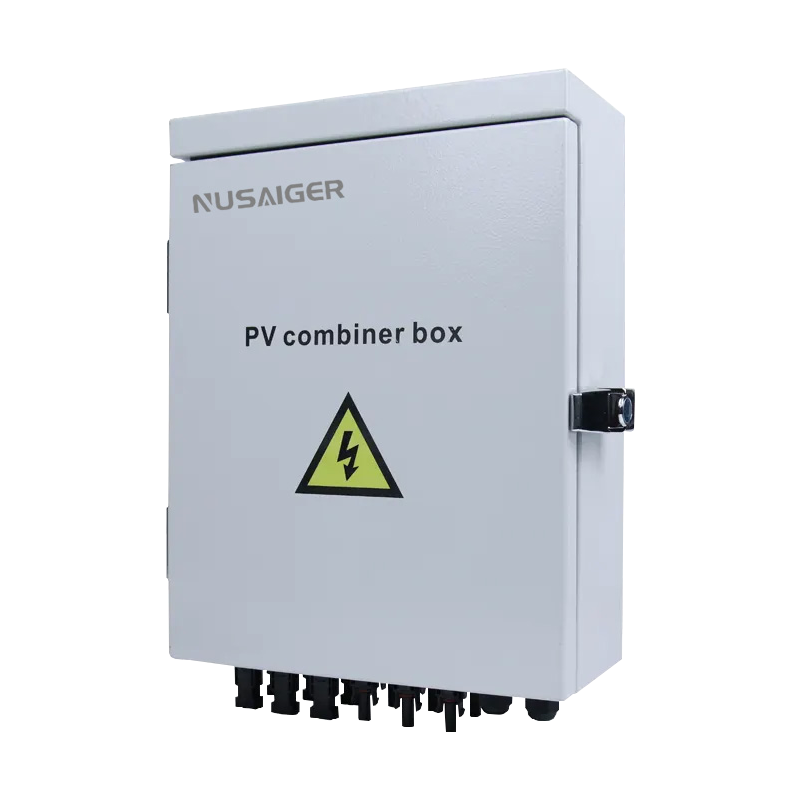Top Benefits of Using Photovoltaic Combiner Boxes in Solar Installations
Last Updated: August 7, 2025
Introduction
As solar installations become more sophisticated and widespread, system optimization and safety remain top priorities. One of the key components that contribute to these goals is the photovoltaic (PV) combiner box. This article highlights the top benefits of using PV combiner boxes in residential, commercial, and utility-scale solar projects.
1. Simplified Wiring Architecture
A PV combiner box combines multiple solar panel strings into a single output, significantly reducing the number of cables that must run to the inverter. This streamlined wiring approach minimizes installation labor, reduces clutter, and improves system aesthetics.
2. Enhanced System Safety
Combiner boxes are equipped with protective components such as fuses or breakers, surge protection devices, and disconnect switches. These elements safeguard the system from electrical faults, short circuits, and lightning strikes, ensuring long-term safety.
3. Better Maintenance and Troubleshooting
Many modern combiner boxes include features that allow for string-level monitoring. This enables installers and maintenance teams to pinpoint issues quickly, reducing downtime and service costs. Fault detection becomes more efficient, especially in large installations.
4. Improved System Efficiency
When designed correctly, PV combiner boxes help minimize resistive losses in cables by reducing unnecessary wiring. Moreover, centralized collection of current results in more stable and predictable energy delivery to the inverter.
5. Cost Reduction in Large Projects
Although adding a combiner box may seem like an extra cost, in large-scale projects, it significantly reduces the amount of copper wiring and conduit required. It also cuts down on labor and installation time, delivering cost savings in the long run.
6. Scalability and Flexibility
Combiner boxes make solar systems more scalable. New strings can be added to the same combiner box if expansion is required. This is ideal for commercial systems with future capacity upgrades in mind.
7. Compliance with Electrical Standards
High-quality combiner boxes meet strict electrical standards (such as UL 1741, IEC 61439, and NEC codes), making it easier for systems to pass inspections and grid-connection approvals. Compliance also builds trust with clients and regulators.
8. Weatherproof and Durable Designs
Most PV combiner boxes are designed for outdoor use, with weatherproof enclosures rated NEMA 4X or IP66. They are made to withstand harsh climates including high UV exposure, rain, dust, and corrosive environments.
9. Integration of Smart Monitoring Features
Advanced combiner boxes include communication interfaces such as RS485, Modbus, or wireless protocols. These enable real-time monitoring and integration with energy management systems (EMS), providing performance data that supports preventive maintenance and optimization.
10. Compatibility with Battery and Hybrid Systems
Some combiner boxes are designed to interface seamlessly with hybrid systems, allowing for integration with battery storage or grid-tied and off-grid solutions. This adaptability supports the evolving needs of modern energy infrastructure.
Conclusion
Photovoltaic combiner boxes are essential for making solar energy systems safer, more efficient, and easier to manage. Their wide range of benefits—from simplifying installation to enhancing long-term reliability—makes them an indispensable component in any well-designed solar installation.
Investing in a high-quality combiner box will not only protect your equipment but also enhance the overall performance of your PV system. Whether for residential rooftops or megawatt-scale solar farms, combiner boxes deliver real, measurable value.



